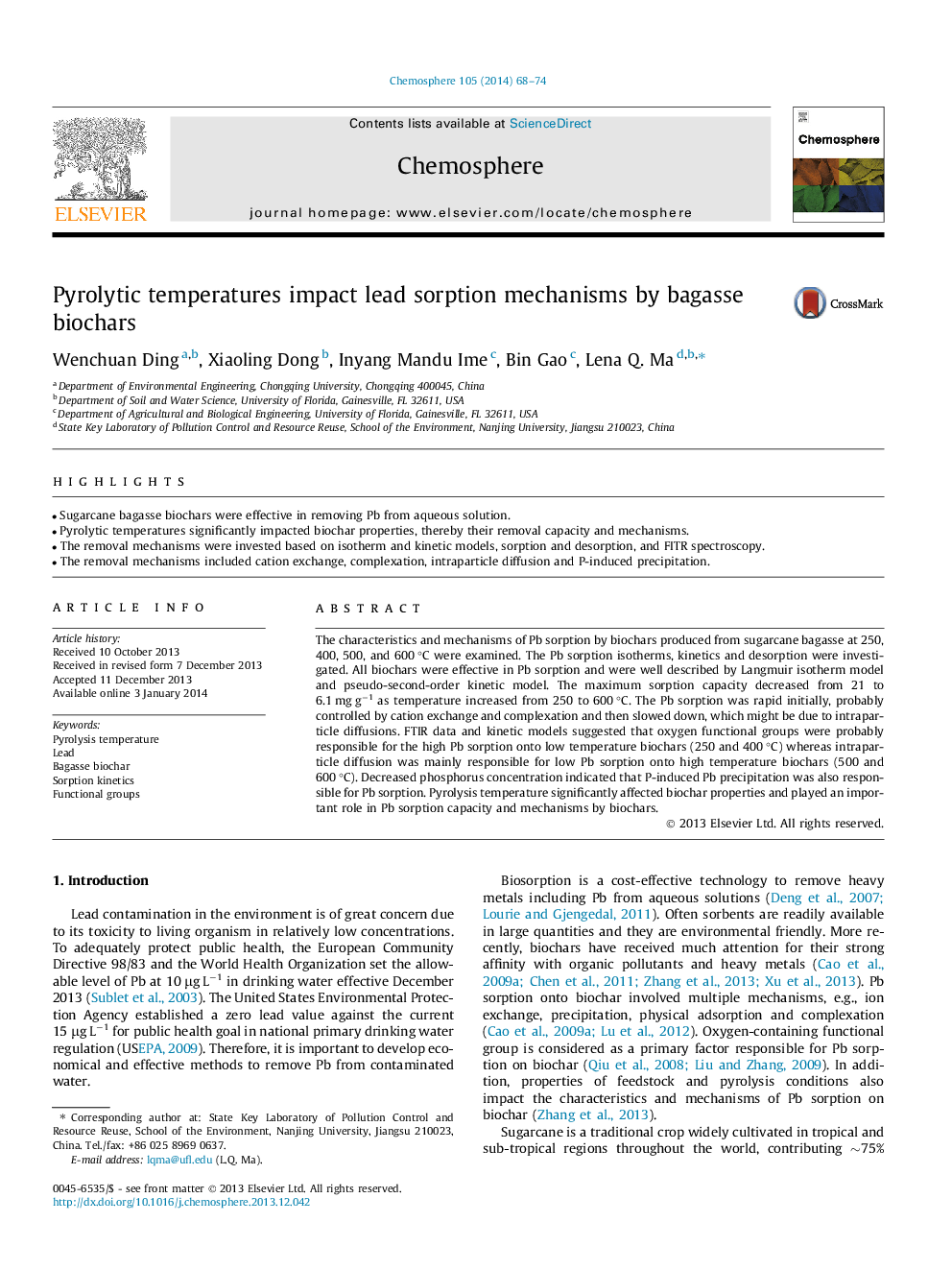| کد مقاله | کد نشریه | سال انتشار | مقاله انگلیسی | نسخه تمام متن |
|---|---|---|---|---|
| 4408880 | 1618866 | 2014 | 7 صفحه PDF | دانلود رایگان |
• Sugarcane bagasse biochars were effective in removing Pb from aqueous solution.
• Pyrolytic temperatures significantly impacted biochar properties, thereby their removal capacity and mechanisms.
• The removal mechanisms were invested based on isotherm and kinetic models, sorption and desorption, and FITR spectroscopy.
• The removal mechanisms included cation exchange, complexation, intraparticle diffusion and P-induced precipitation.
The characteristics and mechanisms of Pb sorption by biochars produced from sugarcane bagasse at 250, 400, 500, and 600 °C were examined. The Pb sorption isotherms, kinetics and desorption were investigated. All biochars were effective in Pb sorption and were well described by Langmuir isotherm model and pseudo-second-order kinetic model. The maximum sorption capacity decreased from 21 to 6.1 mg g−1 as temperature increased from 250 to 600 °C. The Pb sorption was rapid initially, probably controlled by cation exchange and complexation and then slowed down, which might be due to intraparticle diffusions. FTIR data and kinetic models suggested that oxygen functional groups were probably responsible for the high Pb sorption onto low temperature biochars (250 and 400 °C) whereas intraparticle diffusion was mainly responsible for low Pb sorption onto high temperature biochars (500 and 600 °C). Decreased phosphorus concentration indicated that P-induced Pb precipitation was also responsible for Pb sorption. Pyrolysis temperature significantly affected biochar properties and played an important role in Pb sorption capacity and mechanisms by biochars.
Journal: Chemosphere - Volume 105, June 2014, Pages 68–74
